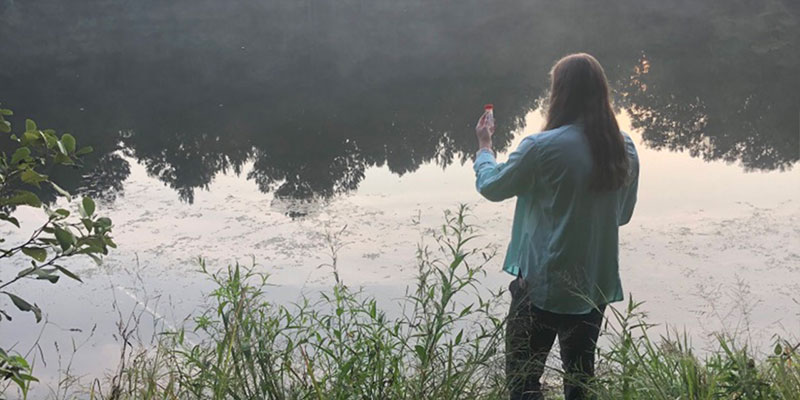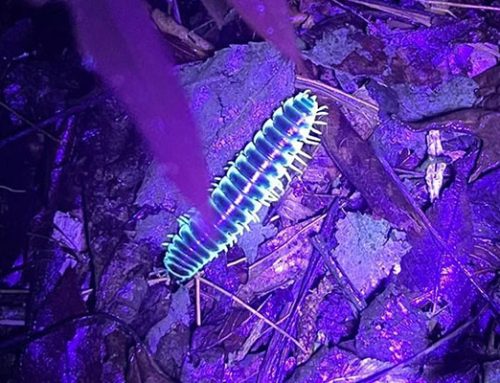When a Farm Pond Isn’t Just a Farm Pond

Around here, farm ponds are about as common as pickup trucks. Most were constructed in the 1900’s as water sources for livestock and/or for crop irrigation. Driving around the countryside you can see them from the road, if you notice them at all. Some are stagnant, full of sediment and algae. Some have cows wading along muddy, eroding shorelines. Others are basically fishing holes with mowed grass right up to the water’s edge, stocked with bream and bass. For the most part, farm ponds, like the late comedian Rodney Dangerfield, “get no respect.”
It took an enthusiastic biology major from Wingate University to help us see that some farm ponds can actually be incredibly rich and full of life. In the Summer of 2021, rising Wingate senior Jayci Scheff was the first of what will be many Field Biology Fellows for the Carolina Wildlands Foundation. Under the guidance of her professors, Drs. Shem Unger and Erika Niland, Jayci documented the plant and animal life of three ponds in Chesterfield, SC. What she found was astonishing.

Jayci and her professors conducted a “rapid biological inventory” with range of techniques, from visual observation to night time game cameras, from dip-nets for aquatic insects to sweep nets for flying ones, and even sound meters. Using the website iNaturalist to classify species, they identified 166 animal species, 70 plant species, and 4 types of fungi/lichens thriving in and around these ponds. From towering Water Oaks to tiny meadow buttercups; Thin-legged Wolf Spiders and Spinybacked Orbweavers; Eastern Box Turtles and American Toads on land, and Yellow-bellied Sliders and Southern Leopard Frogs in the water; Bass and Bluegills; families of American Beaver and River Otter; Bobcat and Gray Fox; Nesting Green Herons and Great Blue Herons; Eastern Tiger Swallowtail Butterflies and Isabella Tiger Moths; more types of dragonflies, damselflies, katydids, grasshoppers, native bees than you can shake a stick at; and the trifecta for Southern sportsmen and women…white tailed deer, wild turkey, and bobwhite quail. In short, Jayci showed us that the habitat in and around these farm ponds is bursting with life!

It was Jayci’s excitement about her findings, though, that got us even more excited. If one 20-year old college student from Wisconsin can teach us more than we ever knew about three local ponds, just imagine how teams of biology students can inspire landowners across the Carolinas to understand the diversity of life in their own farm ponds. Biology students bring a level of passion and sense of urgency about caring for nature that can get older landowners to sit up and take notice.
Younger generations can share their sense of wonder and discovery to teach older generations a simple lesson: even with something as basic as a farm pond, if you look long enough and close enough, you’ll see the beauty in it as a natural oasis that is full of life, and you just might give them the respect they deserve.







